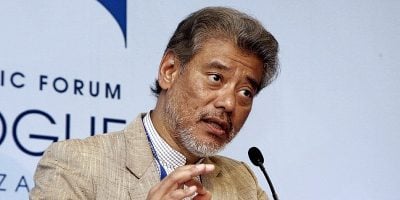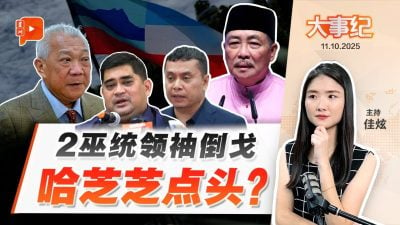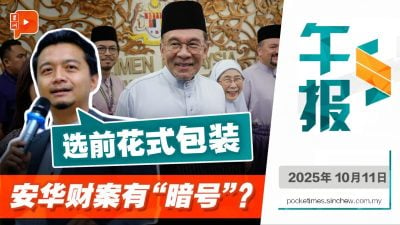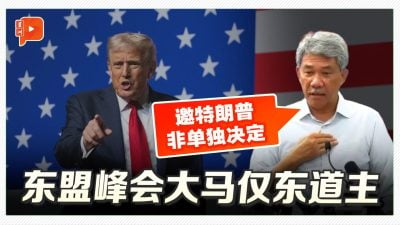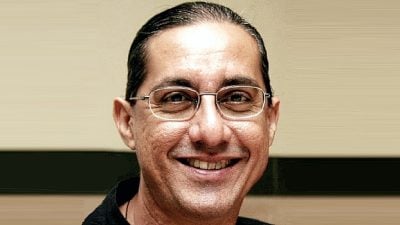
At the IISS Shangri-La Dialogue in Singapore, US Defense Secretary Pete Hegseth delivered a message wrapped in strategic urgency but sounding more like a blunt ultimatum: America’s Indo-Pacific allies must raise their defense spending to 5 percent of GDP to counter the threat of China.
It was a headline-grabbing soundbite. But for ASEAN, the appropriate response is clear, deliberate, and principled: No.
This is not the first time such demands have echoed across the Pacific. But what makes this moment uniquely troubling is the tone and trajectory of Hegseth’s remarks.
His plea, in effect, represents a poorly repackaged version of the Guam Doctrine of 1969—but one that has lost all sense of balance.
The original Guam Doctrine was grounded in burden-sharing and strategic pragmatism. Hegseth’s version, however, is drenched in the transactional worldview of Trump-era “America First” politics: allies must pay more or risk being sidelined.
This shift transforms a once-coherent alliance policy into something punitive.
Strategic cooperation is not being encouraged—it is being demanded.
The defense of Asia, under this new logic, is now contingent on how much each partner can contribute financially, not how deeply they share common principles or threats.
But ASEAN cannot and should not accept such a framework.
First, the economic reality speaks for itself. As per the Stockholm International Peace Research Institute’s 2024 data, defense spending in Asia remains well below the proposed 5 percent GDP mark.
Singapore, the highest in ASEAN, allocates just 2.8 percent. South Korea stands at 2.6 percent, Taiwan at 2.1 percent, and Japan at 1.4 percent. The Philippines manages only 1.3 percent, with countries like Malaysia, Indonesia, and Cambodia well below that.
Calling for a jump to 5 percent is not just unrealistic—it’s irresponsible. It would divert precious resources from health, education, digital development, and green transition—core priorities for ASEAN’s future.
As Indonesia’s Maj. Gen. Kristomei Sianturi rightly noted, even spending 1 percent of the national budget on defense is a stretch. And he speaks for much of the region.
Second, the contradiction in US policy is impossible to ignore.
While urging higher military spending, the Trump administration is simultaneously imposing punitive tariffs on Asian exports—including semiconductors, steel, and electronics from Southeast Asia.
These tariffs erode the very fiscal capacity needed to meet US defense expectations. Strategic solidarity cannot flourish in a climate of economic hostility.
Third, ASEAN’s conception of security has never been about arms races or defense quotas.
ASEAN is not NATO. It was never designed to be a hard-power bloc. Its resilience has always stemmed from its founding principles: multilateral diplomacy, non-interference, and inclusive cooperation.
In this respect, ASEAN’s current Chair—Malaysia—has taken a principled stance.
Prime Minister Anwar Ibrahim reiterated the policy of “active non-alignment”—a sovereign approach that avoids entanglement in superpower rivalries.
This is not indecision; it is a conscious choice to preserve ASEAN’s strategic autonomy.
Cooperation with both the US and China is possible—alignment with neither is essential.
That’s why Hegseth’s invocation of Europe as a model is flawed.
Yes, NATO members are spending more—because Europe faces a direct war on its borders. Asia, by contrast, has avoided major inter-state wars for decades.
While tensions over Taiwan and the South China Sea persist, they do not warrant a region-wide militarization agenda dictated from afar
What’s more concerning is the unstable messaging from the Trump administration itself.
On one hand, they threaten troop reductions in South Korea and possibly Japan. On the other, they demand increased local spending.
This schizophrenia in US posture—pull back your troops, but spend more—undermines Washington’s credibility in the region.
Professor Da Wei of Tsinghua University rightly noted that such mixed signals erode trust in US strategic intentions.
When US policies oscillate between economic punishment and military pressure, ASEAN has little incentive to follow orders that appear more self-serving than stabilizing.
Of course, Hegseth did highlight some concrete steps—such as the deployment of NMESIS missile systems in the Philippines and the establishment of P-8 aircraft repair facilities in Australia.
These are pragmatic moves. But even they must be viewed critically.
Are they genuine signs of shared responsibility—or early steps in pushing ASEAN toward becoming a forward base in a new Cold War?
ASEAN must not let itself be militarized by proxy.
True regional security lies in coast guard cooperation, maritime domain awareness, cyber defense, and climate resilience.
The Combined Maritime Forces (CMF), ASEAN Defense Ministers’ Meeting Plus (ADMM+), and Track 1.5 dialogues are far better suited to address the hybrid threats ASEAN faces—piracy, illegal fishing, trafficking, and disinformation—than heavy military buildups.
America needs to listen more, not lecture louder.
If the US wishes to remain a long-term, trusted partner in the Indo-Pacific, it must recognize that alliances are not auctions.
Strategic trust cannot be bought with budgets, but must be earned through mutual respect, consistency, and support for regional agency.
ASEAN’s response must remain calm, clear, and committed to its founding principles. It must say no to impositions that distort its priorities.
In a fractured world, ASEAN’s greatest strength lies not in how much it spends—but in how well it balances.

(Prof Dr Phar Kim Beng is Professor of ASEAN Studies, International Islamic University Malaysia.)
ADVERTISEMENT
ADVERTISEMENT






